Make Yours a Dream Garage with a Cool New Epoxy or Tile Floor
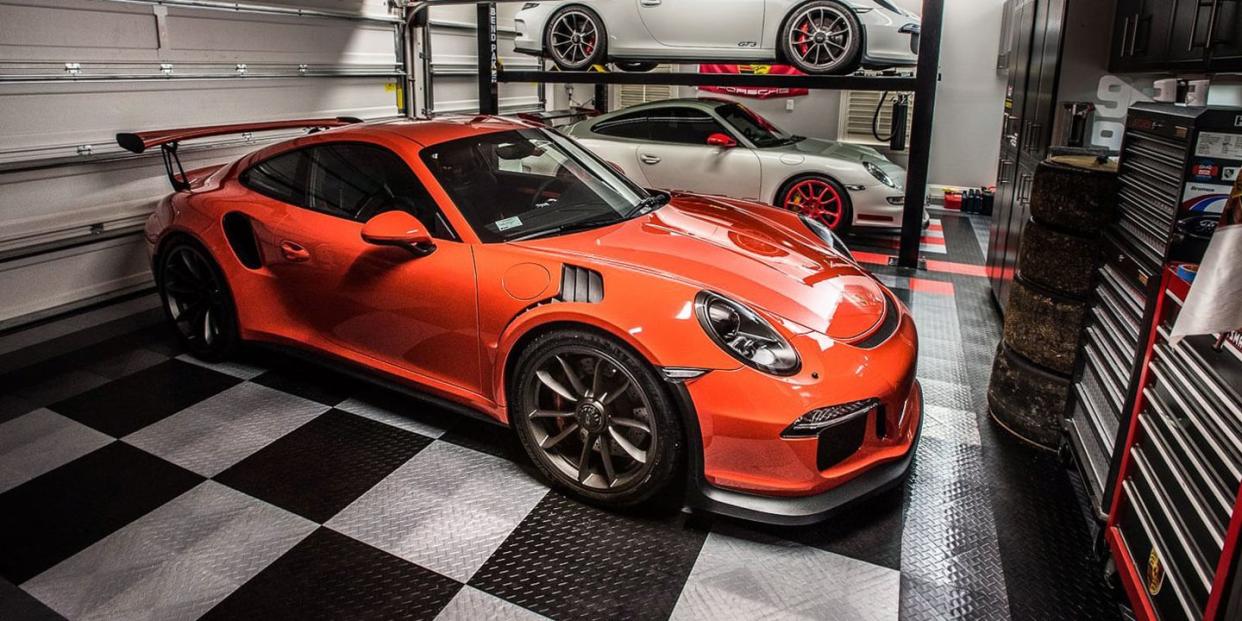
Yes, we know: you could turn any space into a dream garage if you could park three Porsches in it, like the lucky owner shown above. But we're not talking about the vehicles you put in your garage; we're here to help you turn it into a happy place to house any set of wheels you happen to own.
You've put the pegboard up, the garage walls are freshly painted, and you've finally installed the bright lighting. You've just about turned your work space into a proper shop for money-saving repairs on the family chariots or your special ride. What you need now is the finishing touch: a great garage floor, using either a garage floor coating, a garage floor epoxy, or some type of solid flooring.
Not to worry. We have some cool garage floor ideas for you. We overhauled our Car and Driver test garage a while back, including outfitting it with new flooring. You don't have to do what we did; there is a range of affordable floor-protection options that are DIY and also look terrific. They vary in cost, durability, and ease of installation. Here are your options for garage floors and their pros and cons.
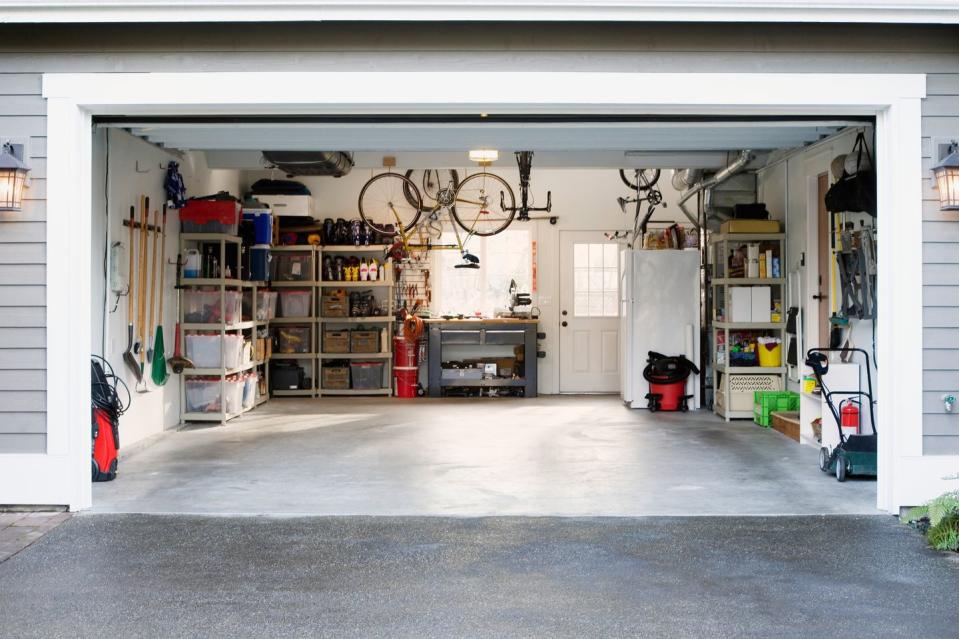
The Two Types of Garage Flooring
There are two classes of garage-floor protection: coatings and coverings. Garage floor coatings, applied with a brush and roller, include paint, stain, sealer, and two-part garage floor epoxy. These have different drying times, color availability, cost, chemistry, and durability. But all require careful attention to floor preparation, humidity, ambient temperature, and their specific application instructions. (Coating experts agree that 80 percent of their work is prep, and just 20 percent is application.)
Because of that, we recommend coatings only if your concrete floor is in good shape-without cracking, damage, or deep staining. Coatings also tend to be options for patient, experienced hands with a couple of days to spare. (Drying times between steps can be 24 hours. Do you have a place to store your garage contents?) Skip or rush the prep, and even the best garage floor epoxy coatings will peel off.
Floor coverings, on the other hand, sit on top of the floor and are great for hiding minor surface problems. These floor coverings, which come in tiles, mats, or rolls, are generally easy to install, repair, and even remove. Other than picking up debris and sweeping, there's little prep. And installation goes quickly as you simply drop down the pieces and pop them together or roll them into place. But per square foot, you also pay more.
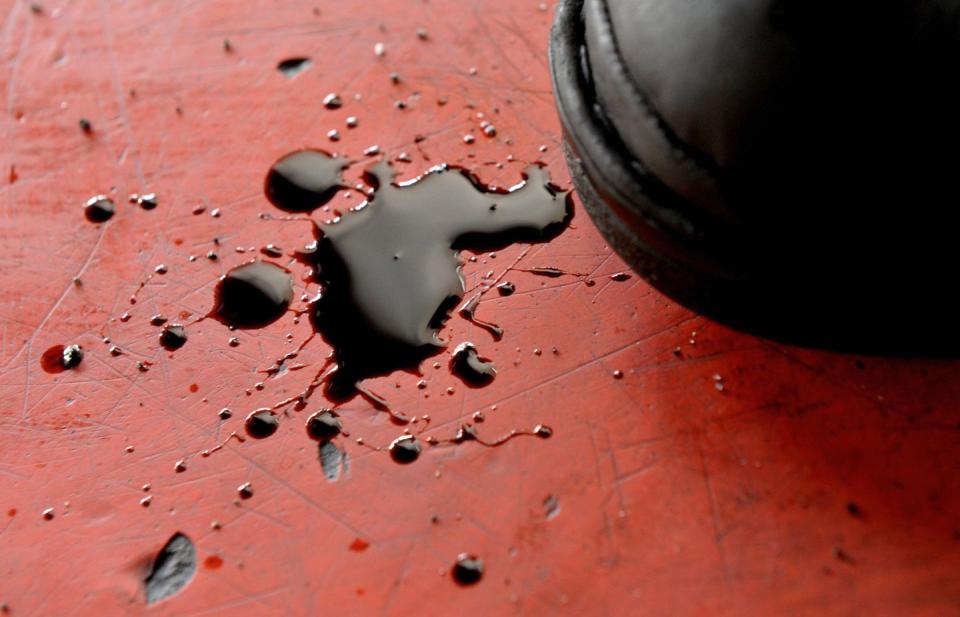
Garage Floor Coating Choices
Properly applied under the right conditions, coatings provide durable protection. "Right conditions" means warm (50 to 90 degrees Fahrenheit) and dry weather that allows the floor-scrubbing prep, patching, and coatings to dry completely, usually with open-garage-door ventilation. So coatings are a spring or summertime choice. And keep in mind that coatings do not provide cushioning or sound attenuation.
Painting the floor with a high-quality garage-floor paint ($30–$40 a gallon) is supereconomical and provides decent protection. (A gallon should cover 200 to 400 square feet; see the product label.) But it will probably require two coats and touch-ups every few years.
Concrete stain ($30 a gallon) is generally tougher, comes in lots of shades, and offers good protection. It usually works best with a sealer ($30–$35 a gallon) but does a poor job of hiding blemished concrete.
Most durable of all, when carefully applied, are the two-part-epoxy coating kits for a two-and-a-half-car space ($200–$800). But their drying time is generally the longest, colors are limited, and the prep, floor patching, and per-gallon cost are the highest.
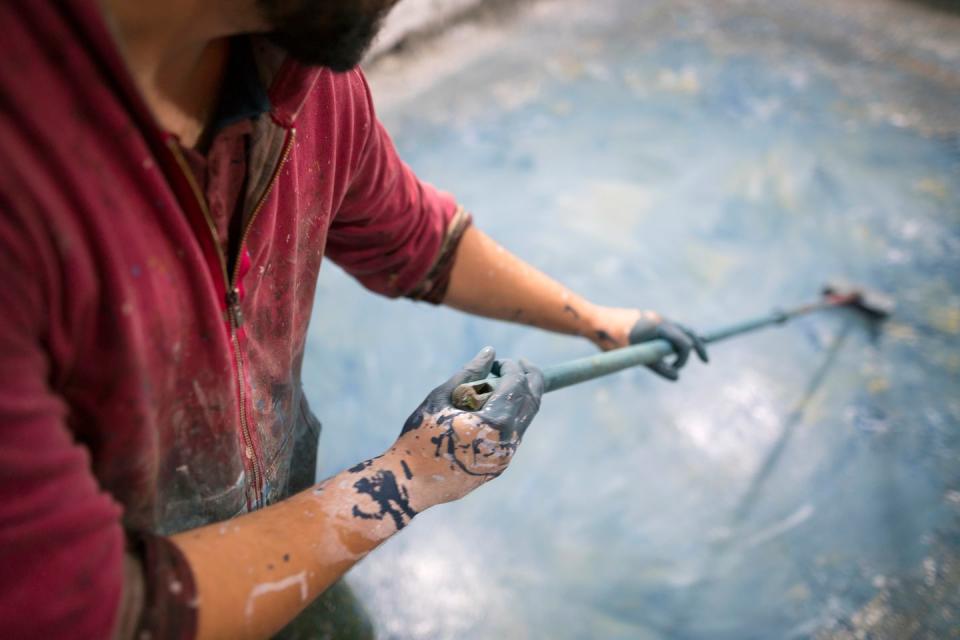
Garage Floor Covering Options
We know cheap folks who buy carpet-warehouse scraps to protect their garage floors. During under-car repairs, carpet is certainly warmer to lie on than concrete. It soaks up oil leaks and provides a bit of a sound barrier. But it also slides around and bunches up under a creeper or jack stands. Further, it doesn't clean up well and retains corrosive, salty water when snow melts in the garage. Colors and patterns are whatever's available. (Maybe you'll get lucky and score a lime-green paisley pattern or blue flying monkeys.)
The good news is that there are floor coverings available that are designed for garages, are handsomely styled, are durable, and can be installed easily. Other than inspecting the floor for integrity and sweeping up, there's little prep. The bad news is that although prices vary ($2–$6 per square foot), protecting a big space can get expensive.
Tiles are generally our favorite covering, despite some of the steep prices on more highly engineered variants. If price is an issue, you can select from a variety of low-cost peel-and-stick vinyl tiles. These come in many colors and textures. But because the tiles rely on an adhesive backing, the concrete should be cleaned and patched, somewhat like the fussy requirements for coatings. And melt from winter vehicles or garage flooding can seep in and unstick the tiles.
The better tiles are made from thick plastic, vinyl, rubber, or even wood-and they interlock. These are sometimes driven into place with the help of a piece of wood or a soft-faced hammer.
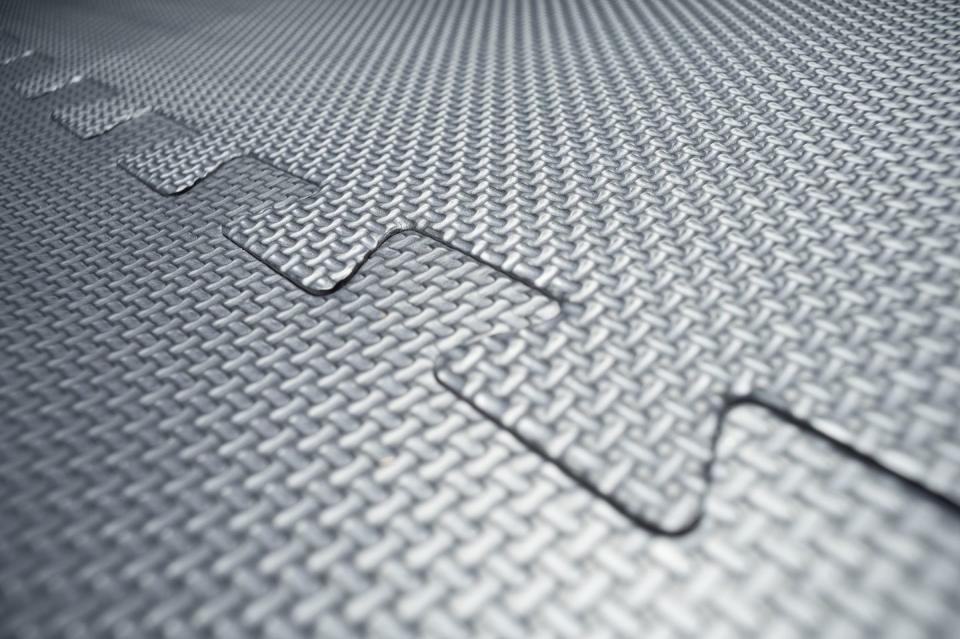
Obviously, different tile materials have different levels of durability. To deaden sound and provide a cushion, pros sometimes install tiles on top of a rubber underlayment ($0.40–$0.50 per square foot) placed over the concrete floor.
Flooring rolls ($1.50–$5.00 per square foot) are another, simpler way to go. These are long, wide rolls of textured material (coin- or diamond-patterned). You unroll and cut it to fit the garage floor using a sharp utility knife. (Be sure to buy extra blades for whatever knife you're using. They dull quickly on the tough material, which you're trimming on concrete.) Experts also recommend that you unroll these (20-by-7.5-foot) mats far ahead of time in warm weather to get them to lie flat. Be sure to take into consideration expansion and contraction with temperature by leaving some space between the floor and the bottoms of the walls and the garage door.
Now you're ready to proceed with that final step for creating your own Garage Mahal.
('You Might Also Like',)

